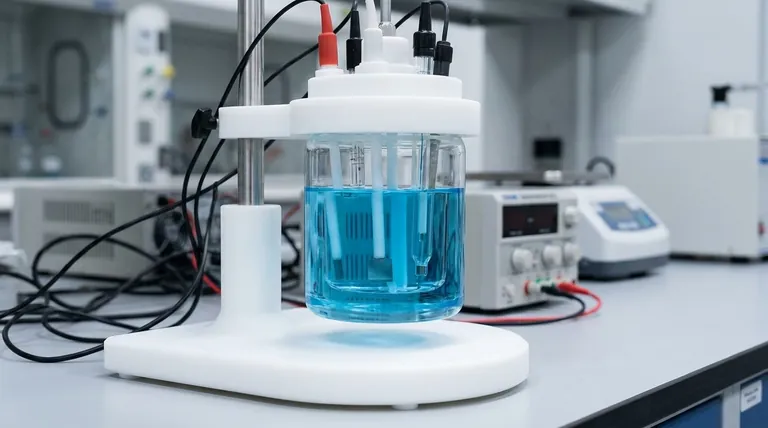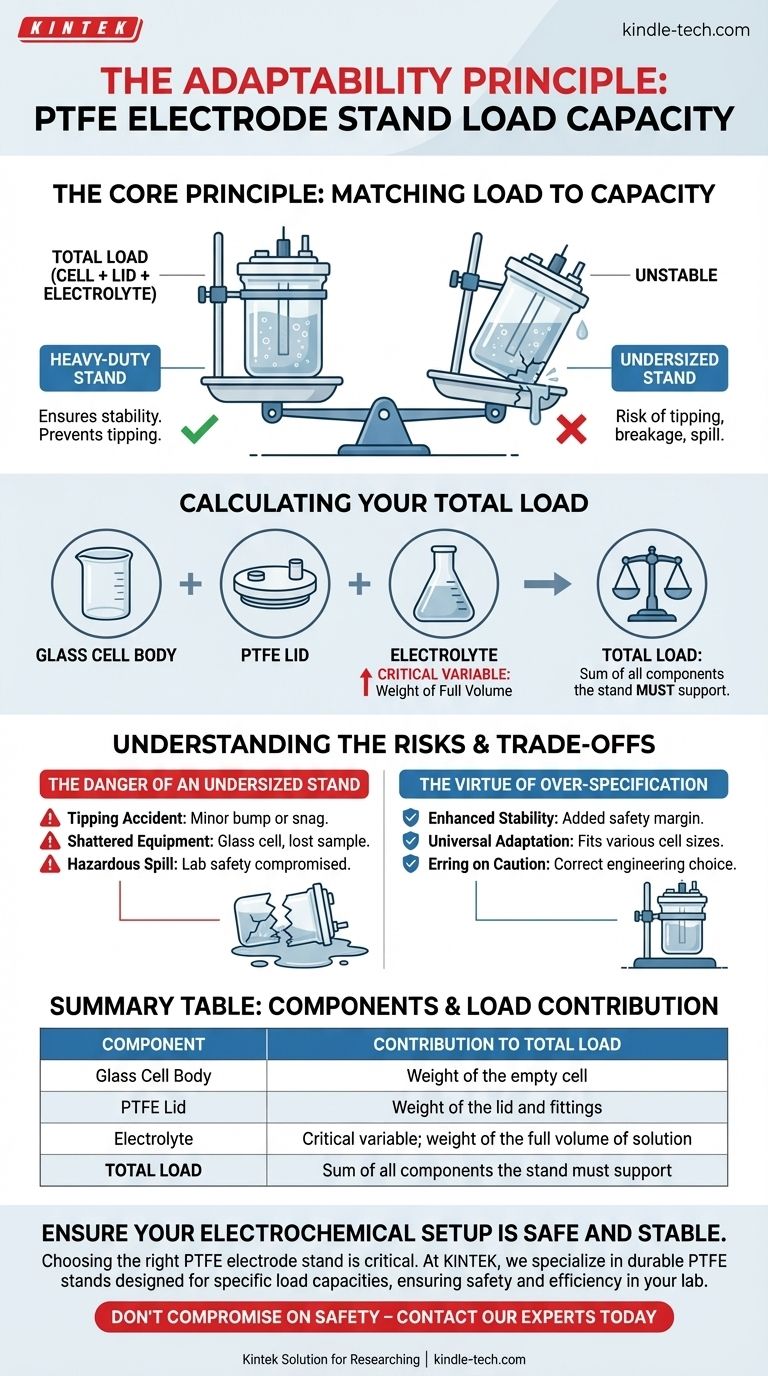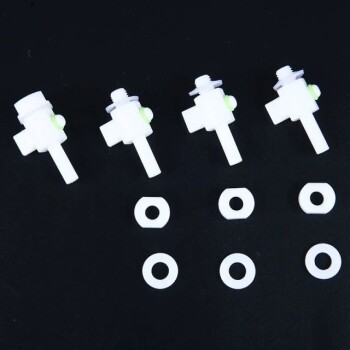In essence, the adaptability principle for a PTFE electrode stand's load capacity is a rule of operational safety. It dictates that the stand you choose must have a capacity sufficient to support the combined, total weight of your electrolytic cell and the full volume of electrolyte it will contain. This prevents the entire assembly from becoming top-heavy and dangerously unstable.
The core challenge is not merely holding an electrode, but safely supporting the entire weight of your electrolytic cell system. The adaptability principle requires you to anticipate the maximum possible load and select a stand that comfortably exceeds it to guarantee stability and prevent tipping.

The Core Principle: Matching Load to Capacity
The stability of your entire electrochemical setup rests on the stand. Misjudging the load is a common and preventable error.
Calculating Your Total Load
The "load" is not just the empty glass cell. It is the sum of all components the stand must support.
This includes the glass cell body, the PTFE lid, and, most critically, the electrolyte that fills the cell.
The Overlooked Factor: Electrolyte Weight
The weight of the electrolyte is a significant variable. A 100 mL cell filled with an aqueous solution adds approximately 100 grams of weight, but this can change with denser non-aqueous electrolytes.
For large-volume cells, the electrolyte can easily become the heaviest single component, dramatically shifting the center of gravity upwards.
Why a "Heavy-Duty" Base is Critical
A heavy-duty stand, as recommended for larger cells, provides two key advantages.
First, its own weight acts as a counterbalance, making the entire assembly more stable. Second, it typically has a wider and heavier base, lowering the overall center of gravity and significantly reducing the risk of tipping.
Understanding the Risks and Trade-offs
Choosing a stand based on cost or convenience without considering the load is a serious oversight. The consequences are not just about inconvenience; they are about safety.
The Danger of an Undersized Stand
An overloaded stand is an accident waiting to happen. A minor bump to the bench or a slight snag on a cable can cause the entire assembly to tip over.
This can lead to a shattered glass cell, the loss of a valuable sample, and a hazardous spill of electrolyte solution. It compromises the experiment, the equipment, and the safety of the lab environment.
The Virtue of Over-specification
There is no technical downside to using a stand that is rated for a much higher load than you require.
While it may be slightly more expensive or take up more bench space, the added stability is a crucial safety margin. When it comes to load capacity, erring on the side of caution is always the correct engineering choice.
Making the Right Choice for Your Experiment
Your choice should be guided by a conservative estimate of your maximum experimental needs.
- If your primary focus is on small-volume cells (e.g., under 50 mL): A standard PTFE stand is typically sufficient, but you must still account for the total weight.
- If your primary focus is on large-volume cells (e.g., 100 mL or more): Selecting a heavy-duty base stand is non-negotiable to ensure stability.
- If you work with a variety of cell sizes: Invest in the heavy-duty stand, as it will adapt to all your needs without compromising safety.
Proper stand selection is a foundational step in ensuring the safety and integrity of your electrochemical work.
Summary Table:
| Component | Contribution to Total Load |
|---|---|
| Glass Cell Body | Weight of the empty cell |
| PTFE Lid | Weight of the lid and fittings |
| Electrolyte | Critical variable; weight of the full volume of solution |
| Total Load | Sum of all components the stand must support |
Ensure your electrochemical setup is safe and stable.
Choosing the right PTFE electrode stand is critical for preventing accidents and protecting your valuable experiments. At KINTEK, we specialize in high-quality lab equipment, including durable PTFE stands designed to handle the specific load capacities required for your electrochemical cells.
Our stands provide the heavy-duty base and stability you need for both small-volume and large-volume applications, ensuring your lab work proceeds safely and efficiently.
Don't compromise on safety—contact our experts today to find the perfect PTFE electrode stand for your laboratory needs!
Visual Guide

Related Products
- Platinum Sheet Electrode for Laboratory and Industrial Applications
- Platinum Auxiliary Electrode for Laboratory Use
- Custom PTFE Teflon Parts Manufacturer PTFE Beaker and Lids
- PTFE Electrolytic Cell Electrochemical Cell Corrosion-Resistant Sealed and Non-Sealed
- Custom PTFE Teflon Parts Manufacturer for PTFE Mesh F4 Sieve
People Also Ask
- What are the available specifications for platinum sheet electrodes? Find the Perfect Fit for Your Electrochemical Needs
- What is the expected lifespan of a platinum sheet electrode? Maximize Your Electrode's Service Life
- What is the proper post-treatment procedure for a platinum sheet electrode? Ensure Long-Term Accuracy & Protect Your Investment
- How should a platinum sheet electrode be operated during an experiment? Ensure Accurate and Reproducible Results
- What are the specifications of the Platinum-Titanium Functional Electrode? Maximize Electrochemical Performance



















